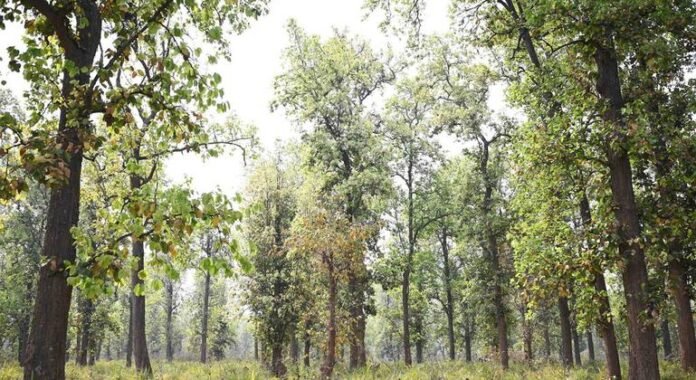Phulwasan Kudupi, a member of the Gond tribe of Masulpani village in the Indian state of Chhattisgarh, walks in the forest with his community every day.
Phulvasan Kudupi collects important forest products from there like Mahua, Harra, Behra and Tendu leaves which have medicinal properties and sells them in the market to sustain his family.
“We are totally dependent on the forest for our livelihood. We will do anything to save it,” said Kudupi.
Their story is the story of millions of tribal communities in India and around the world who depend on “collective resources” for their livelihoods.
“Common resources” are those natural resources such as forests, pastures and water sources, which are used and managed collectively by all members of the community.
About 350 million people in India, especially in rural and tribal areas, depend on these collective resources. But, their access and rights to these resources are still insecure.
Importance of joint assets
Around two and a half billion people worldwide depend on community-managed land. These collective resources are often managed by creating collective rules to ensure equitable use and sustainability.
The destruction of these resources has led to problems such as biodiversity loss, land degradation and water scarcity, which impact vulnerable communities the most.
Tribal populations, who derive almost half of their annual income from forests, are particularly affected by this situation.
To address this challenge, it is necessary to secure land rights and promote decentralized governance, so that both livelihoods and the environment can be protected.
Nobel laureate Dr. Eleanor Ostrom’s research on collective resource management paved the way for sustainable management of collective resources.
His principles resonate deeply with India’s rural and tribal communities, whose future depends on preserving these shared resources.

Collective resources: Key to climate resilience and gender equality
The Intergovernmental Panel on Climate Change (IPCC) has recognized the critical role of protected rights over collective resources in addressing climate change.
Communities that have control over their resources can better manage and conserve them, thereby reducing environmental risk.
For tribal communities, collective wealth is not only an economic asset but also an important foundation for resilience to climate shocks such as drought and floods.
Gender equality is also a central aspect of this discussion. The burden of wealth accumulation often rests with women and women also suffer the most from the depletion of collective resources.
This is adversely affecting their rights, livelihood and social status. Secure land rights give women legal recognition over these assets, giving them fair and equal access to land and other natural resources.
In addition, inclusive governance and management of natural resources improves the status of women. It empowers them to actively participate in decision-making processes, ensure equitable access to resources and promote sustainable practices.

Rights-based approach
Collective resource recovery efforts are consistent with the Sustainable Development Goals (SDGs), particularly the principle of “leaving no one behind”.
This approach calls for governance that balances environmental restoration, livelihoods, and social justice.
In India, UNDP has promoted community-based conservation in collaboration with the Ministry of Tribal Affairs, State Tribal Welfare Departments and the Ecology Security Institute.
The rights of forest dwellers, particularly the rights of Scheduled Tribes, have been recognized by strengthening the effective implementation of India’s Forest Rights Act (FRA).
This has helped these communities manage their resources sustainably.
FRA not only protects tribal rights, but also promotes biodiversity conservation and sustainable development. The Act proved to be helpful in protecting livelihoods by empowering communities to manage forests.
Collective resources are not just shared space; They are a lifeline for millions of marginalized people. Conservation of these resources is crucial for social justice, climate resilience and sustainable development.


